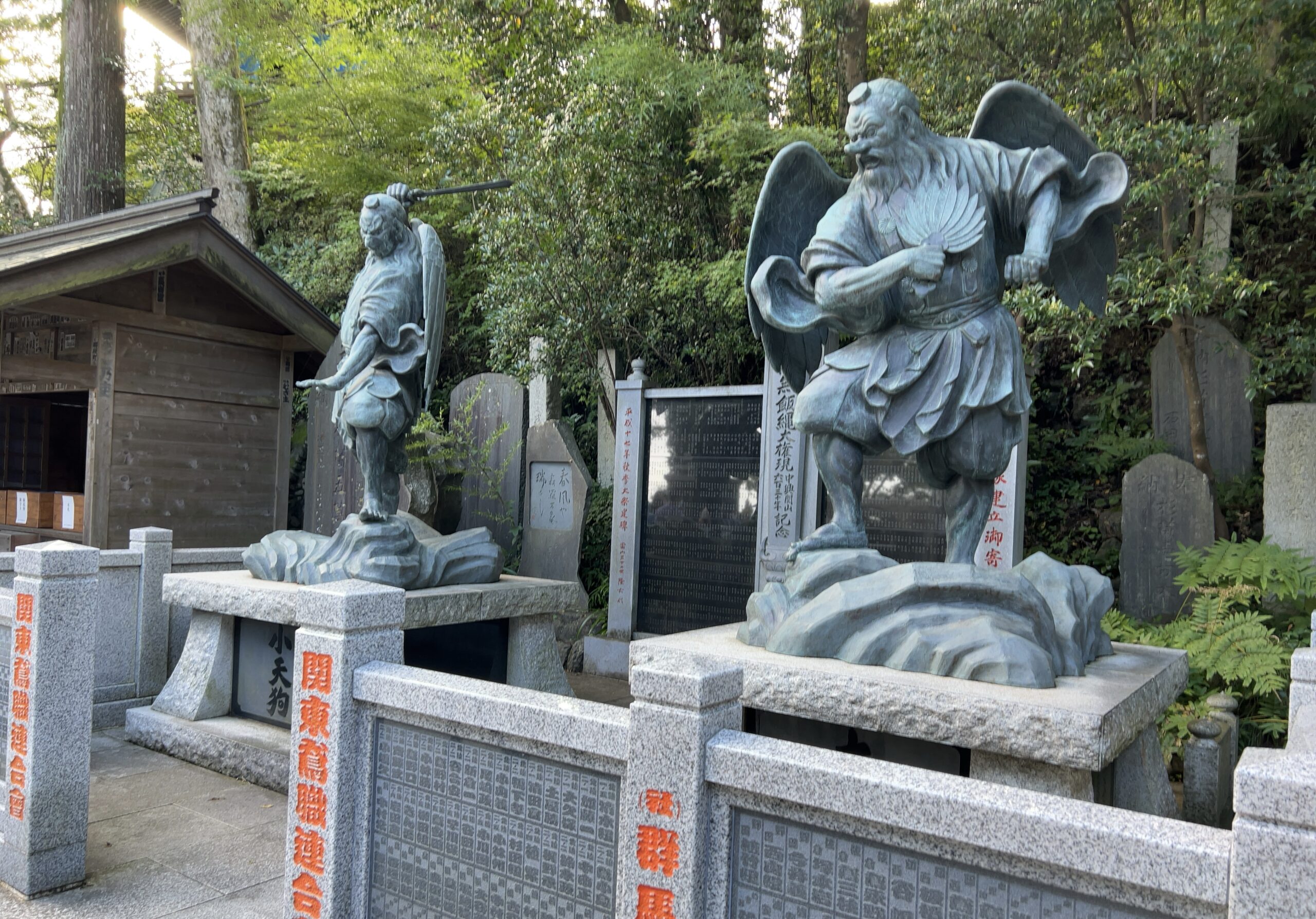Tengu is another symbol of Mt. Takao.
Tengu is an imaginary creature and closely associated with Shugendo which is the fusion of Buddhism and the Japanese mountain worship derived from Shinto.
They are believed to live in sacred mountains acting as messengers of the gods.
In Mt. Takao, they act as messengers of Izuna Daigongen, literally, the Great Avatar of Izuna, who is regarded as the religious ruler of Mt. Takao.
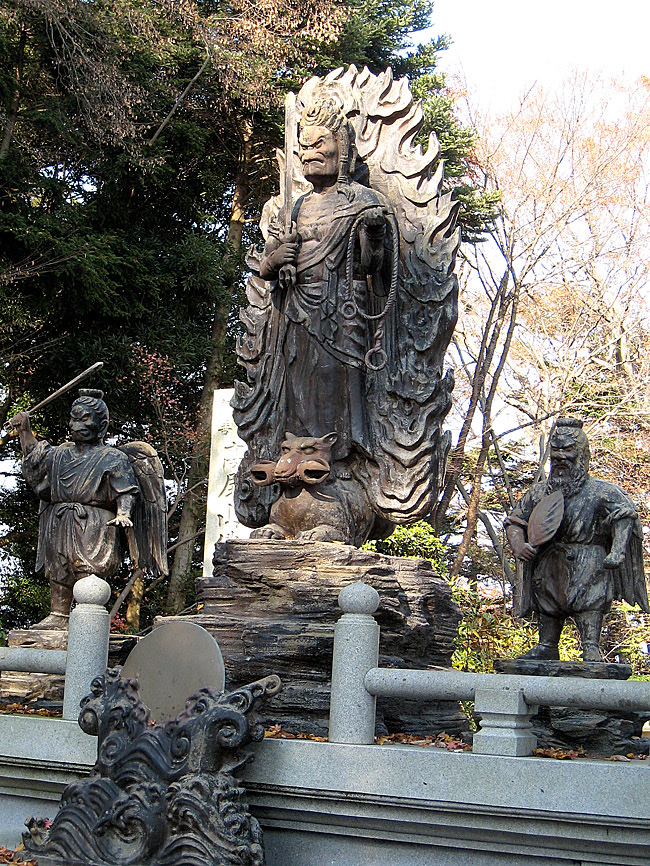
Even before you arrive at the foot of the mountain, a huge stone carved Tengu mask will welcome you at JR Takao Station.
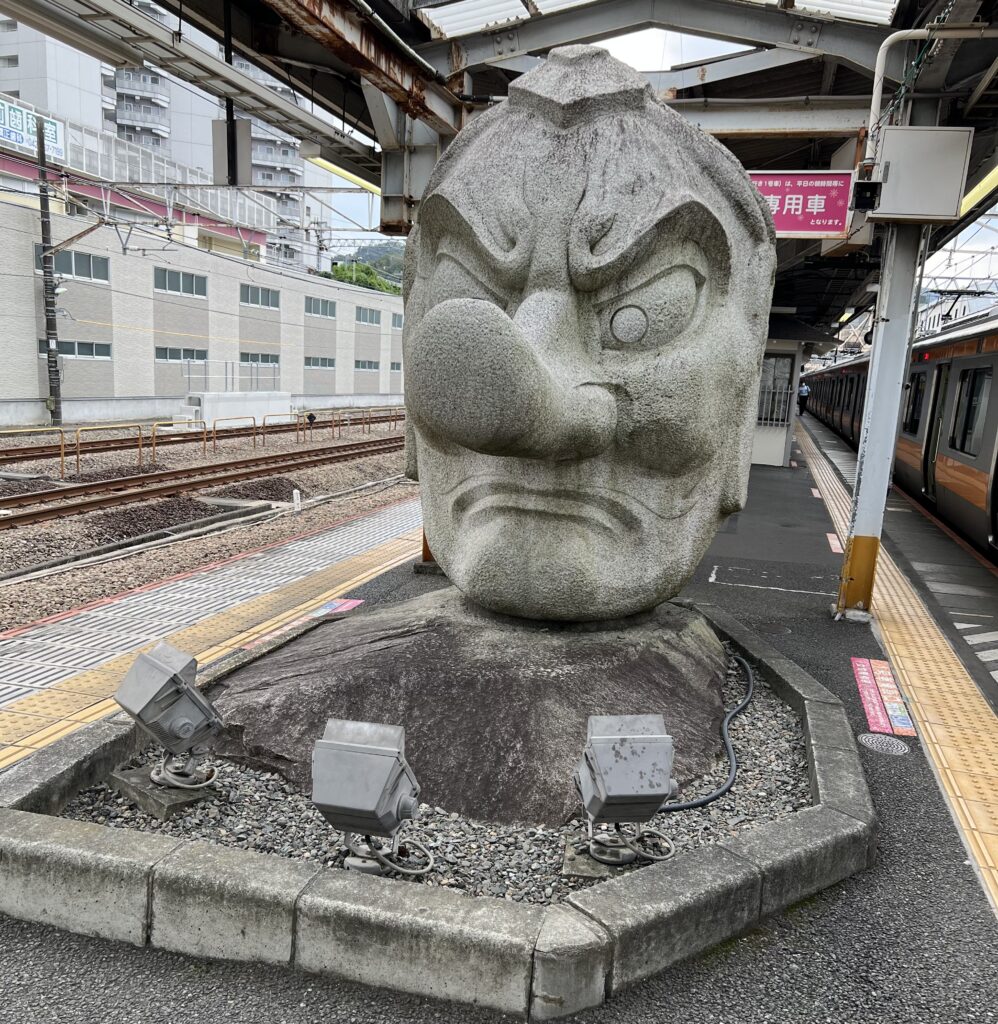
According to one theory, the word of Tengu comes from the Chinese word Tiangou, literally, a Heavenly dog, a legendary creature which was thought to eat the sun or the moon during a solar eclipse or a lunar eclipse as the case may be.

It is also understood that Tiangou was alternatively used to describe a shooting star as an ominous omen in the ancient China.

In Japan, it was in the Nihon Shoki (The Chronicles of Japan), which is the 2nd oldest book of classical Japanese history written in Chinese, that the Chinese character “Tiangou” appeared for the first time.
In the Nihon Shoki, Tiangou was used to mean a shooting star as an ominous omen.
Since the Nihon Shoki is said to have been compiled in the early 8th century, we can reasonably assume that in those days in Mt. Takao there lived no such a creature as recognized as Tengu today.
Tengu is commonly depicted as a long nosed goblin in the costume of a mountain priest.
Tengu is considered to be able to fly in the air freely holding a magical feather fan called “hauchiwa”.
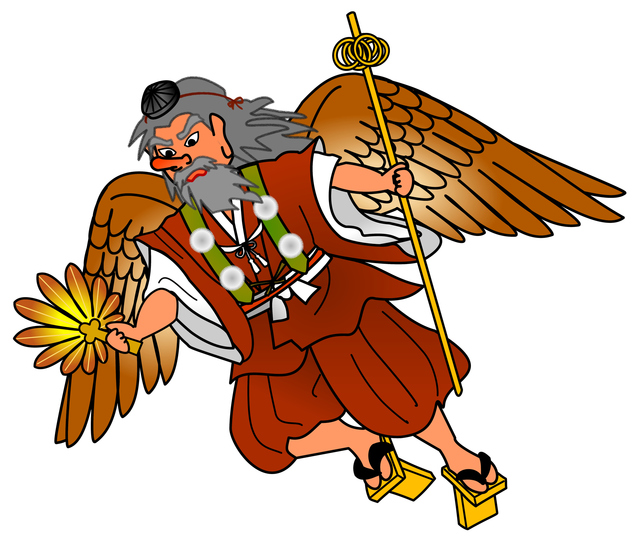
Just like a mountain priest, Tengu wears a headgear called tokin and a pair of tall wooden clogs with one tooth, holding a staff called a shakujo (or khakkhara in Sanskrit).
Having said that, most of the mountain priests in Mt. Takao wear a pair of ordinary two-tooth wooden clogs or a pair of straw sandals.

As you see from the above photo, the mountain priests in Mt. Takao are blowing a trumpet shell in procession.
Although a trumpet shell is another symbol of mountain priests, I have never heard that Tengu is a good musician.
Looks like this image of Tengu had been established toward the end of Heian period in the evolution process of Shugendo under the influence of some other religions such as Taoism (including the Principle of Yin and Yang) that is an ancient Chinese philosophy.
Tengu appears in many places in Mt. Takao.
Most of them you can see there will be a pair of Ah-Un style statues.

Tengu on the left from the viewer’s perspective with a birdlike head is a junior Tengu or an apprentice Tengu that is still undergoing religious training.
He closes his mouth.
Tengu on the right from the viewer’s perspective with a big nose is a senior Tengu that is often likened to an experienced mountain priest who has attained spiritual power through rigorous religious training at Mt. Takao.
He opens his mouth.
The senior Tengu is thought to have the ability to fly freely in the sky.
Long, long ago when there was less light after sunset, people may have confused Japanese giant flying squirrels, another symbol of Mt. Takao, with a senior Tengu.
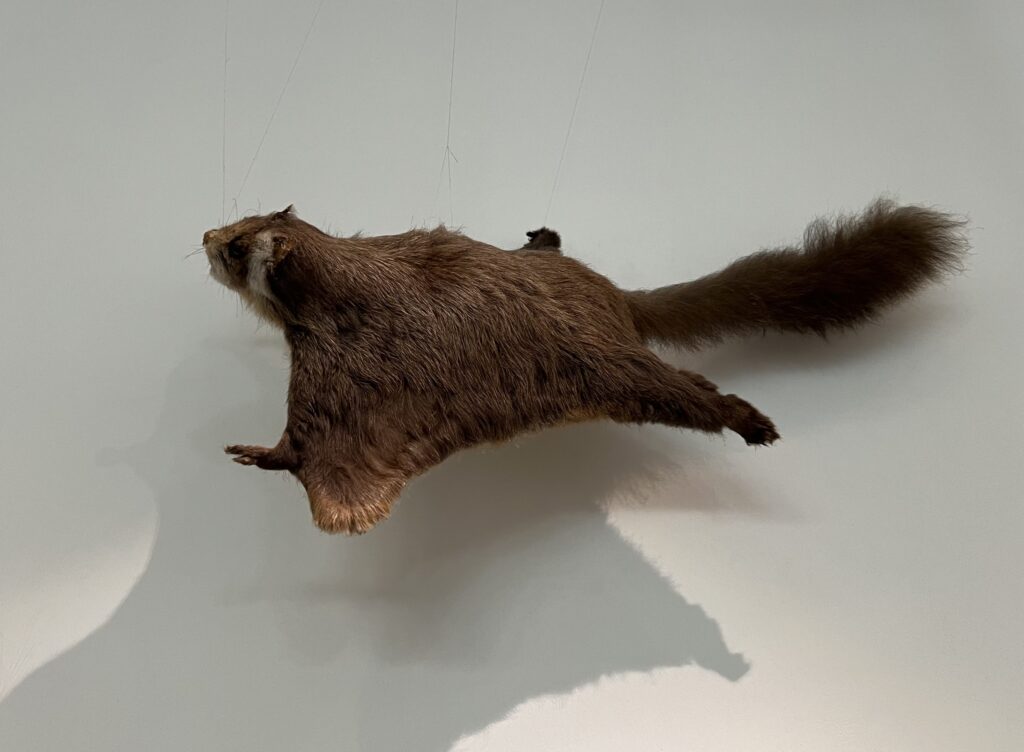
As you see, the senior Tengu is often depicted holding a hauchiwa, that is considered to sweep away misfortune and bring in good fortune.
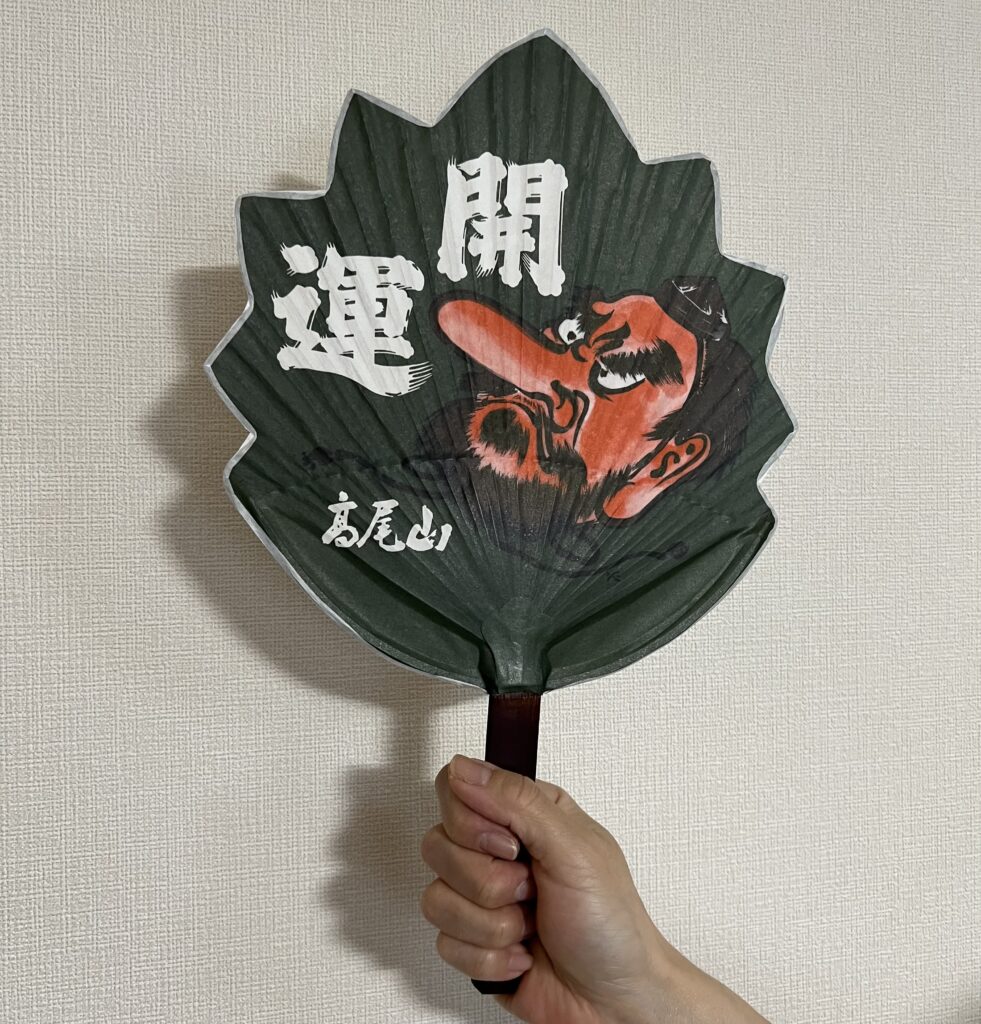
According to one theory, the image of Tengu was originally created modeled on the statue of Karura-ten (Garuda, in Sanskrit) which is one of the Buddhist guardian deities of Indian origin.
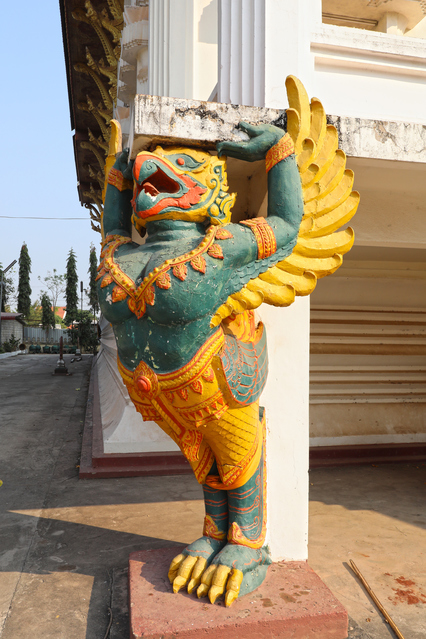
Many of you may be familiar with an Indonesian airline named after this Buddhist guardian deity of Indian origin.
So, in this context, it can reasonably be assumed that a junior Tengu with a birdlike head had originally been the leading character while it had been gradually losing its number one position to a long nosed senior Tengu in the course of full establishment of Shugendo toward the end of Heian period.
Tengu Yaki, the number one dessert at Mt. Takao, is shaped like a junior Tengu’s face.
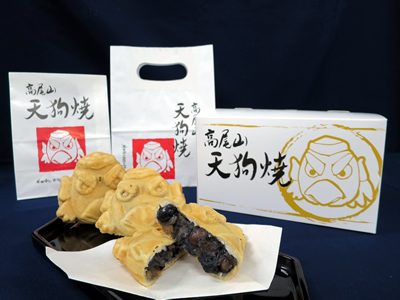
One of the fifteen (15) large cedar trees on the side of the front approach to Yakuo-in Temple that are designated as natural monuments by the Tokyo Metropolitan Government is called Tengu no koshikake sugi, literally, Cedar tree on which Tengu sits.
Thus, Tengu are considered monitoring any suspicious visitors to Yakuo-in Temple from the upper part of this huge tree which is some 700 years old or older.
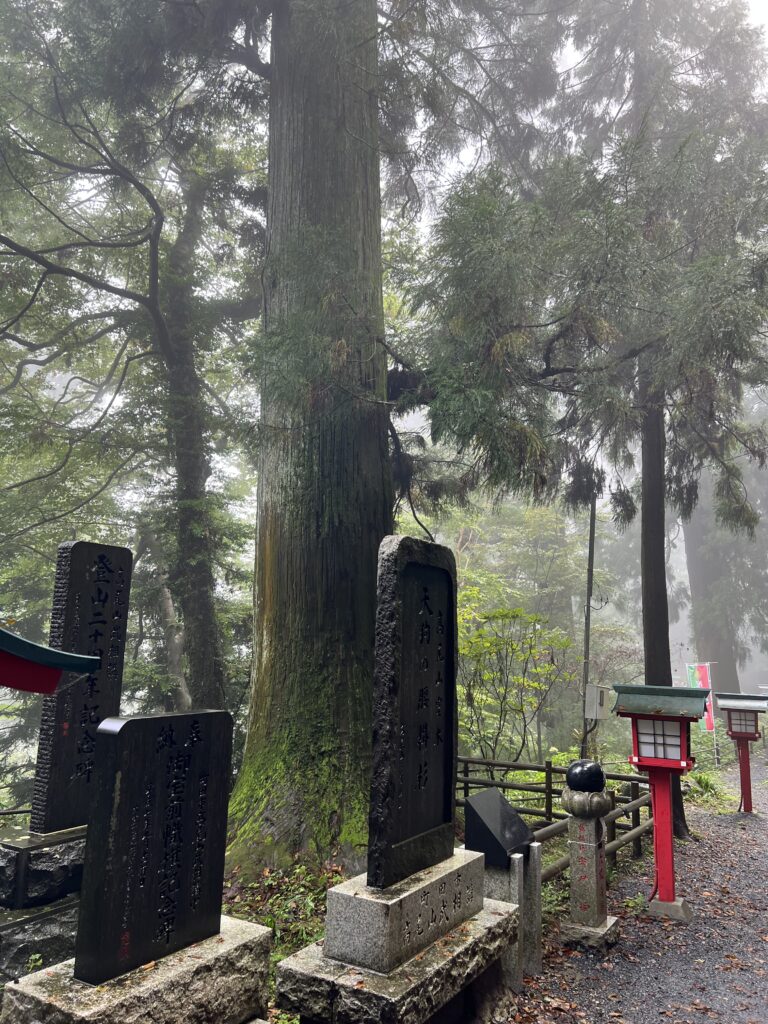
When you go through Shitenno-mon, literally, the Gate of Four (4) Heavenly Kings, the first Buddhist style gate, it is not just four (4) Heavenly Kings who are watching you.
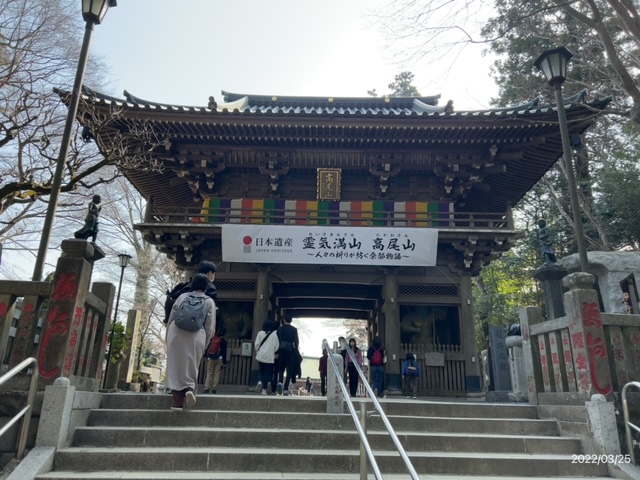
You can also find a large Tengu mask watching you inside the wall by using your smart phone to light it up.
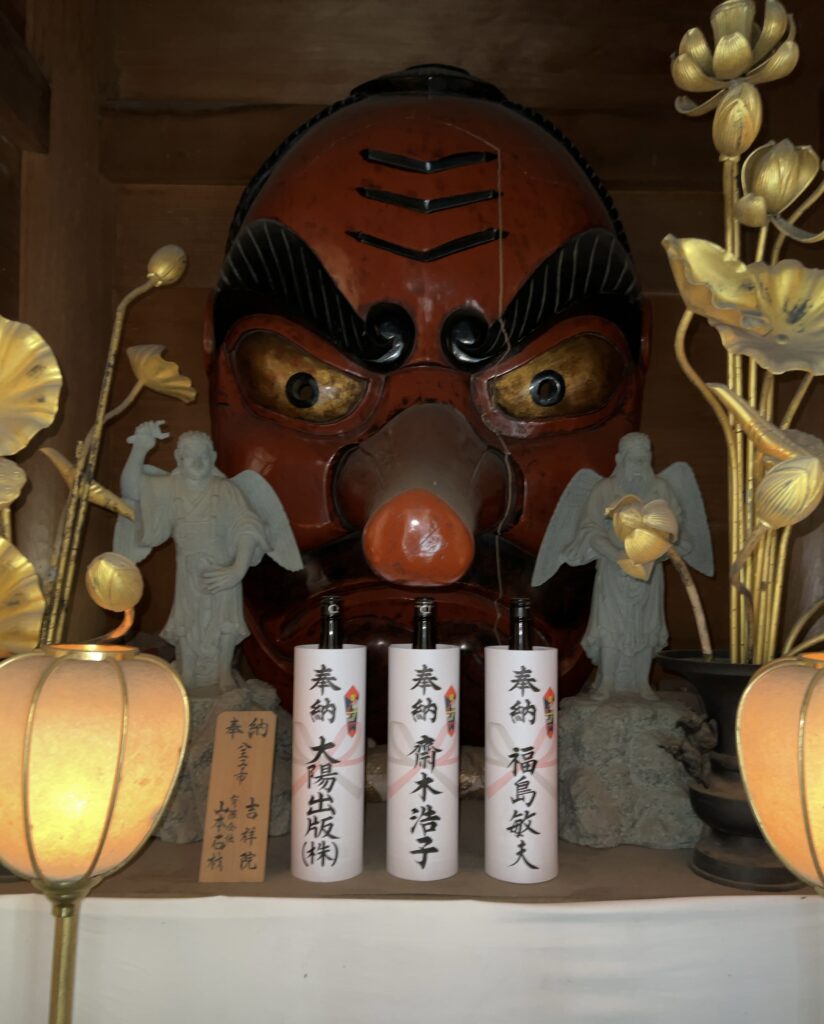
At Nio-mon, literally, the Gate of Two (2) Heavenly Kings, that is the second Buddhist style gate to the Main Hall of Yakuo-in Temple, you will see a pair of Ah-Un statues of Tengu having funny faces enshrined on the other side of a pair of Ah-Un statues of Heavenly Kings.
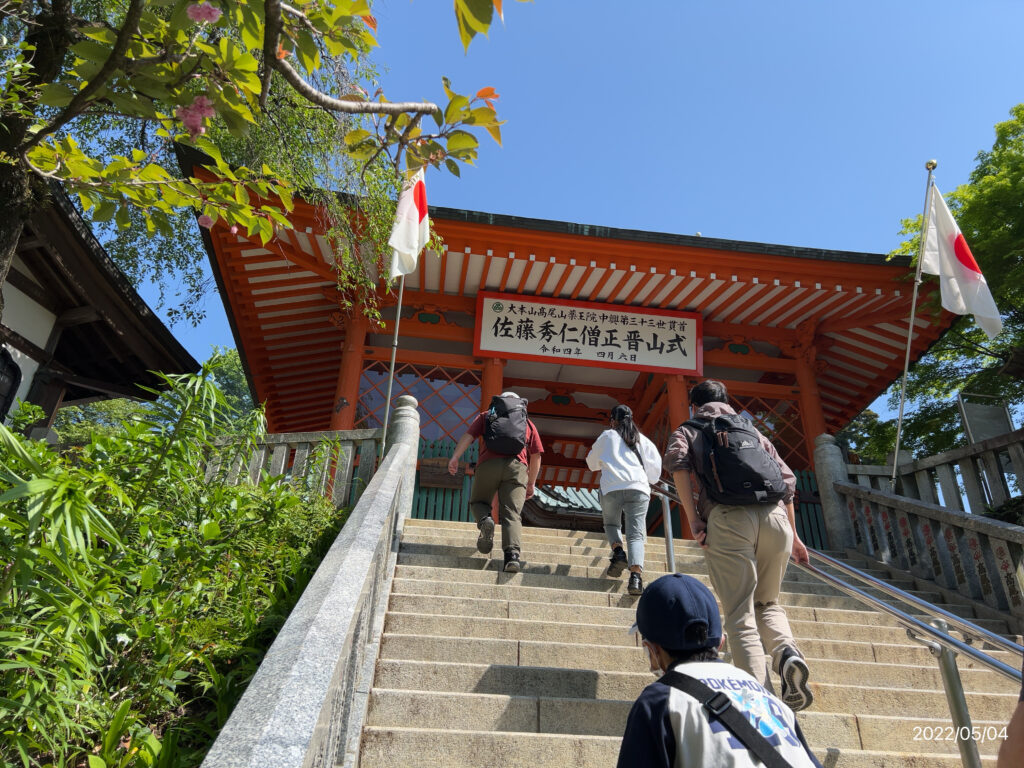
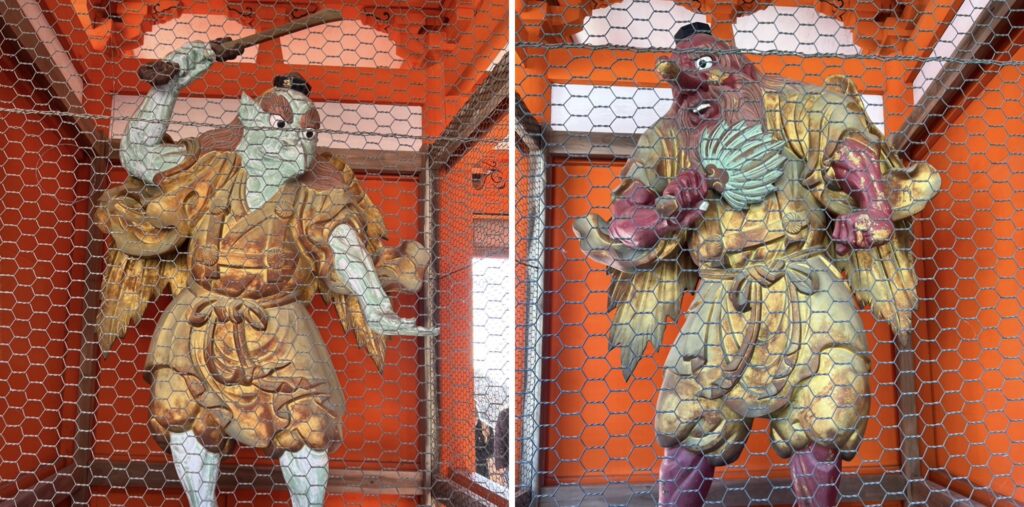
Further, you will see a lot of ema, literally, a picture of a horse, that are votive picture tablets hanged on the outside wall of Nio-mon.
People write their wishes on ema and offer them to shrines or temples when they pray for something, or they write thank you notes on ema and offer them when their prayers are answered.
The tablet sometimes bears a picture of a horse because people once offered real horses.
Many of the ema of Yakuo-in Temple bear a picture of Tengu instead of a picture of a horse.

The Main Hall of Yakuo-in Temple are guarded by a pair of Ah-Un statues of Tengu and a pair of Ah-Un style of Tengu masks.
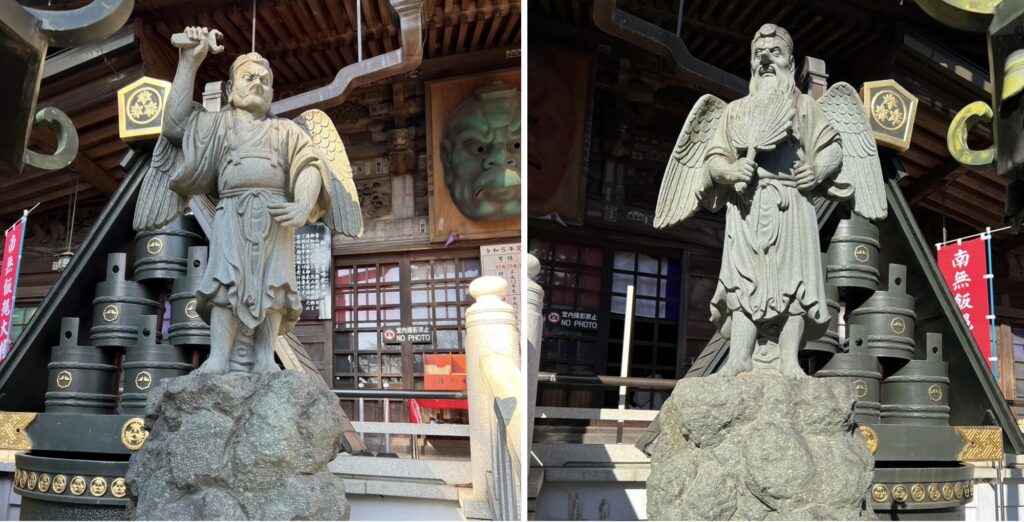
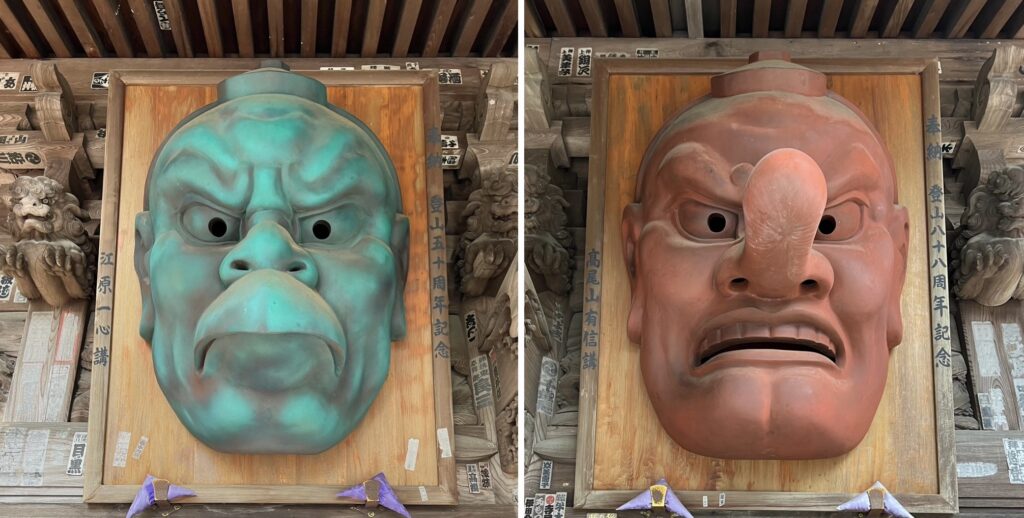
Izuna Gongen-do Hall, another main hall like structure of Yakuo-in Temple, is also guarded by another pair of Ah-Un style Tengu statues.
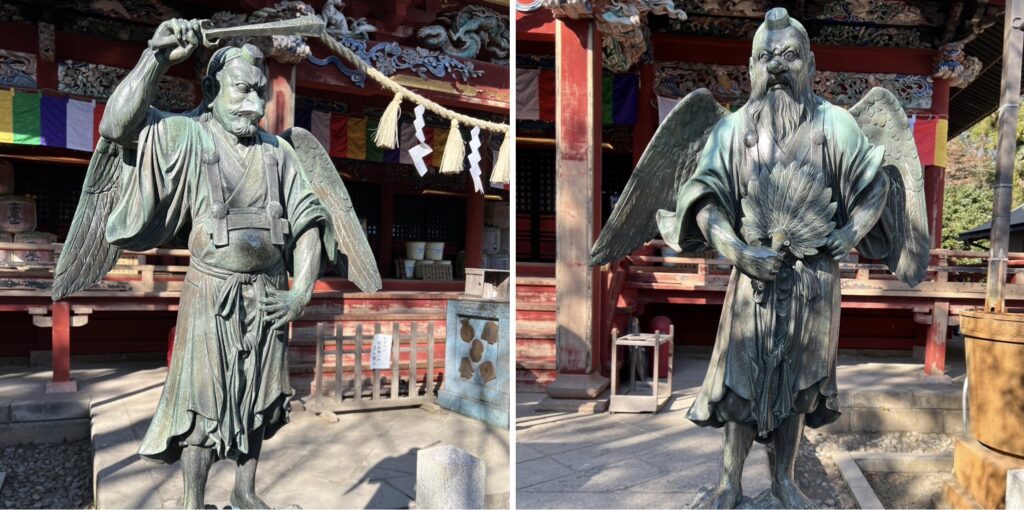
The small shrine next to the Izuna Gongendo-Hall is called Tengu-sha having the architectural style with an asymmetrical gabled roof.
This small shrine is dedicated to Tengu who are the messengers of Izuna Daigongen.
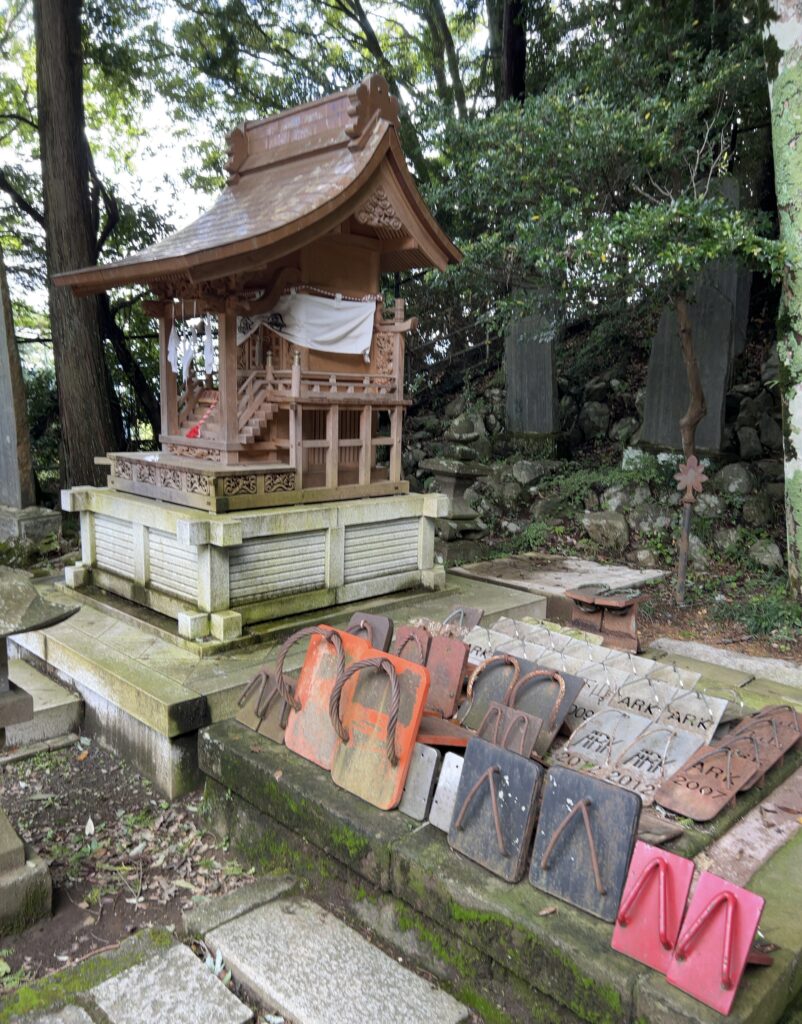
A lot of the offerings of footwear are made there in hopes that the worshippers’ lower half of the body should get strong like Tengu.
As you see, in Mt. Takao Tengu are ubiquitous.
So, you cannot be too careful in behaving well by observing the rules there mentioned in the post titled Trail 1 as the choice of the hiking routes to the peak of Mt. Takao.
Don’t leave any garbage behind!
